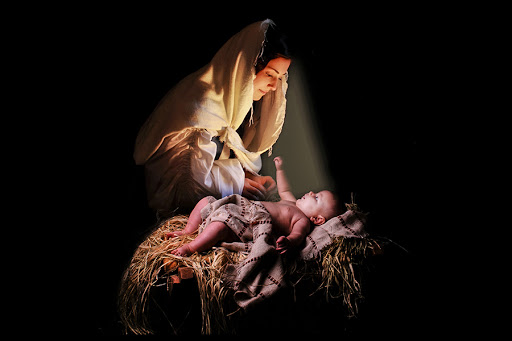In the introduction to his book The Strangest Way, Bishop Robert Barron recounts a story from the life of Thomas Merton. Merton, who became Catholic after a Hindu monk directed him to read Augustine’s Confessions and The Imitation of Christ, was walking down the streets of New York chatting with his friend Robert Lax. Both had only recently become Catholic.
Their conversation turned to the future. Lax asked him: “Tom, what do you want to be?” Merton replied, “I don’t know, I guess what I want is to be a good Catholic.” Lax corrected his friend saying, “What you should say is that you want to be a saint.” Merton says his friend’s strange answer changed his life. He went on from that moment to understand that Christianity was not merely a matter of getting all the ideas right, but living life right. It’s not merely knowing about the way of the Lord that’s important, but walking, indeed, as John the Baptist says, preparing it.
Barron proceeds in the book to name three paths, three ways, to walk following Christ. He names them: 1) Finding the center, 2) Knowing you’re a sinner, and 3) Realizing your life is not about you. Each of these paths is particularly relevant to us this Advent season and each path will allow us to hear and follow Christ more confidently.
1Finding the Center
The first path chiefly concerns conversion, that is, really embracing holiness and seeking it. In the book, Bishop Barron is concerned about the error of spiritualizing religion. For him this means, essentially, reducing the religious enterprise to a mental or emotional pursuit.
Why is this so dangerous? Because human beings are not just brains or feelings. We’re body-and-soul creatures. As Barron puts it, “Christianity has as much to do with the body as with the mind.”
Traditional Christianity is chock-full of practices that reach the whole person: pilgrimages, fasts, processions, the Rosary, wearing medals and crosses, are among the many resources he names at our fingertips.
2Knowing you’re a sinner
Another concern of Barron’s is the lack of discussion of sin and judgment in the Church today. We have allowed caricatures of the past to dominate the way we address sin and the last things. Barron explains, “A frank acknowledgement of one’s dysfunction is not a signal of psychological debility; just the contrary, it is an indication that one has finally directed one’s life toward the light. It is not the neurotics but the saints who can say they are sinners.”
Facing the reality of sin is made possible by God’s grace, which transforms us. Only God can allow us to confidently gaze into the darkness of our hearts and own up to what really lurks within.
Barron gives us Confession, truth-telling, and forgiveness. In Confession, we acknowledge our sins before God, and receive pardon for our offenses. In truth-telling, we cling to Christ, our Truth. We say to an increasingly secular world that some religious things are worth believing, and that we refuse to be parted from them. Finally, by forgiving we embrace one of the most basic and central concepts of the Gospel. “Forgiveness, in the full New Testament sense of the term,” says Barron, “is an act and not an attitude.” Here too, Barron stalwartly opposes the modern tendency to subjectivize or interiorize forgiveness. Forgiveness means to pour out love and mercy, even on those who have harmed us.
3Realizing your life is not about you
Real religion, argues Barron, is about docility. Thinking through an argument for the existence of God from St. Anselm, Barron declares, “Whatever God is, he is not to be caught in the net of concepts, ideas, or images; whatever he is must, in principle, be received as a gift.”
The Virgin Mary demonstrates this surrender; she is the one who abandons herself completely to God’s designs and plans. Surrender to God leads us to mission.
To practice this path, Barron recommends that we be attentive to discerning the will of God. Our attention to the signs God uses to direct our lives, will lead us to happiness on the way of discipleship. On this path, too, Barron has situated the corporal and spiritual works of mercy, and the liturgy, which, in their own way, open us to God.
4A Fourth?
On Barron’s first path, we are drawn to Christ at the center of life, by conversion. Healing and transformation are worked in us on the second path. And on the third path, we are sent to do the work of Christ.
If I may be so bold, I would add one more path to the list. In the fourth way, a path particularly suited for Advent, we are drawn to intimate union with Christ. This path is marked by contemplation, which gives us great delight. The Christmas celebration, the feast of Christ’s birth in Bethlehem, is the event of God with us, a mystery to reflect on, to contemplate.
In pursuit of this way, we clear out distractions, simplifying life. We turn to the Word of God to hear God’s voice, speaking to us through the Sacred Authors. We practice contemplative prayer.

